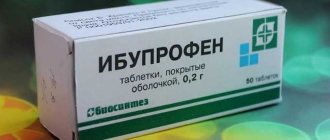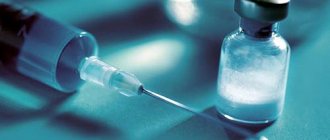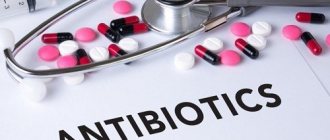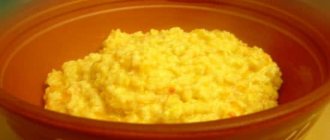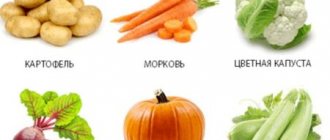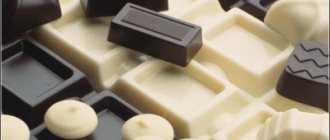Why does pain occur?
Pain is the main manifestation of acute pancreatic pathology. It is caused by the same reasons as the exacerbation itself:
- non-compliance with the prescribed diet - overeating or consuming prohibited foods;
- drinking alcoholic beverages;
- nervous stress;
- pathologies of other organs of the digestive system in the acute stage - for example, inflammation of the gallbladder or gastritis;
- poisoning by food, drugs or chemical fumes.
Usually pain makes itself felt half an hour after consuming an inappropriate product. It is this period of time that is required for the secretory function of the pancreas to be activated after food enters the stomach. If the food is heavy and indigestible, the pancreas is under great stress, and its inflammation begins. In this case, swelling of the pancreas develops, blood flow to the organ increases, as a result of which the pressure inside it increases and pain occurs.
Pain is also caused by:
- narrowing of the pancreatic ducts;
- degenerative tissue changes;
- hypoxia - insufficient oxygen supply to the organ;
- disorders of the blood supply to the pancreas.
Extensive tissue damage leads to the development of pancreatic necrosis.
If the lobules of the pancreas become necrotic (it is in them that pancreatic juice is produced), it is poured into the peritoneal cavity. This also causes severe pain; the patient is in a very serious condition and cannot think of anything else but how to relieve the pain of pancreatitis by any means. Pain in the chronic form of pancreatitis has a slightly different development mechanism. The inflammatory process is not as acute as during an attack, irritation of the pancreas is insignificant. But those tissues that were damaged during the exacerbation period are scarred, and dense connective tissues are formed in their place instead of glandular ones. They put pressure on the surrounding vessels, nerve endings and internal organs. Therefore, the patient may complain of constant, aching pain in the hypochondrium, sometimes radiating to the right or left side, to the back between the shoulder blades.
Mechanism of pain
When the pancreas becomes inflamed, swelling of the stroma and tissue occurs. This leads to enlargement and swelling of the organ. Edema fluid begins to leak into the free space between the pancreas and its capsule.
The pancreas capsule is a thin film that covers the organ on all sides. It contains a large number of receptors. When the edematous fluid sweats, the capsule stretches, which leads to severe pain. In addition, there are a number of other mechanisms for the occurrence of pain in pancreatitis:
- Stagnation of bile and pancreatic juice in the ductal system. Hypertension also leads to stretching of the excretory ducts of various parts, irritation of pain receptors and pain.
- Pancreatic ischemia. With pancreatitis, blood flow in the gland is reduced, which leads to insufficient blood supply to its cells. A state of ischemia occurs in the organ, which manifests itself as an ischemic state.
- With severe destruction (or the addition of complications), a massive release of active enzymes occurs into the blood and into the peritoneal cavity. This leads to severe pain in the abdomen (due to irritation of the peritoneum and nearby nerve trunks and plexuses).
When treating pain, it is important to understand the mechanism by which pain developed in order to adequately prescribe an analgesic.
How does pain occur in chronic pancreatitis?
With secondary exacerbations, the pain is less pronounced than the initial attack. The location changes. Discomfort is felt in the following areas:
- in back;
- at the top or belly visa;
- in the chest.
In the case of chronic pancreatitis, the pain is not very pronounced and has a different frequency. The discomfort that arises is associated with the consumption of heavy food and alcohol.
It happens that after a severe exacerbation, the painful sensations disappear. Don’t relax, we may be talking about necrosis of a large area of the pancreas.
As a result of painful sensations, patients experience a disturbance in their psycho-emotional state. With a long course of the disease, the psyche is seriously damaged.
Painful sensations during an exacerbation of pancreatitis cause irreversible damage to the patient’s health. Therefore, it is important to relieve pain in the pancreas in time, forgetting about stress and pain for a while.
Drug pain relief
For pancreatitis, the following types of analgesics are used:
- Myotropic antispasmodics (No-shpa, Papaverine, Platiphylline).
- Non-steroidal anti-inflammatory drugs (or non-narcotic analgesics) - Ibuprofen, Indomethacin, Aspirin, Diclofenac. This group also includes the combination drugs Baralgin and Pentalgin.
- Narcotic analgesics (Promedol, Fentanyl).
- Novocaine drugs (Novocaine, Lidocaine)
Patients can take the first two groups of drugs at home to relieve a pain attack. No-shpa (Russian analogue of Drotaverine) is best suited. The last group of drugs for pain relief are used exclusively in a hospital and under the supervision of a physician (after the use of antispasmodics and non-narcotic analgesics has been unsuccessful).
Pain relief in a hospital involves taking the above drugs in tablets, but more often they use injection and drip forms of administration. For this purpose, subcutaneous and intramuscular injections and intravenous drips are prescribed.
What to do in case of acute pain
If the patient has had an attack of acute pancreatitis for the first time, the pain occurs suddenly and rapidly increases. Typically, such a situation finds a person at work, at home or at a party. You can numb the inflamed pancreas with improvised means before arrival. But at the same time, it is important to know what you can and cannot do, so as not to harm the patient even more:
- The patient should take a sitting or semi-sitting position, slightly tilting the body forward.
- It is better not to lie on your back - this will increase the pain.
- Under no circumstances should you take medications containing enzymes, as many people do for abdominal pain after a feast and libations. On the contrary, now you need to slow down the production of enzymes.
- Do not stimulate vomiting if you are worried about nausea, belching and retching, using potassium permanganate and other solutions. Do not eat - some try to drink jelly, broth or eat a portion of viscous porridge, but now is not the time to do this.
- It is only allowed to drink still mineral alkaline water in small sips and small portions. Try not to take analgesics and other painkillers, as this will make diagnosis more difficult.
- The only thing you can try to relieve pain in acute pancreatitis before the ambulance arrives is tablets or injections of Drotaverine and Papaverine. As a rule, the patient is hospitalized; this is necessary to make an accurate diagnosis and provide emergency assistance if bleeding occurs or severe damage to other organs is detected.
Methods for relieving pain in acute pancreatitis
It is not recommended to relieve pain due to pancreatitis on your own before the ambulance arrives, because upon arrival, the attending physician needs to find the cause of the pain. If the pain is unbearable, then self-medication is allowed only on the advice of your doctor, who is fully familiar with the course of your illness. If you suspect a relapse of the disease, you should immediately call an ambulance.
Symptoms of exacerbation of the disease:
- sharp pain in the abdominal area;
- nausea, in some cases almost continuous;
- diarrhea, often with severe flatulence;
- severe increase in body temperature;
- weakness, lethargy.
If you notice any of the above symptoms, you can relieve the pain before the ambulance arrives. The person needs to lie on a flat surface on his back. Something cold or frozen, such as ice, should be applied to the location of the pain. It is allowed to take medications from the group of analgesics or antispasmodics.
List of drugs that can temporarily relieve an attack of pancreatitis:
- Drotaverine;
- Maxigan;
- No-Shpa;
- Fentanyl;
- Spasmalgon;
- Festal;
- Mezim;
- Tramadol;
- Pancreatin.
These drugs can quickly relieve pain, but temporarily. Taking other painkillers for pancreatitis can have the opposite effect, that is, only increase the patient’s discomfort.
Often, specialists prescribe antidepressants to patients. This is explained by the fact that with frequent pain, patients experience emotional declines that have a detrimental effect on their overall well-being.
Never use medications that contain pancreatic enzymes!
Help with chronic or acute pancreatitis?
During exacerbation of chronic pancreatitis, it is necessary to be careful with medications. Pain may be caused by other diseases, and taking antispasmodics will make it difficult to determine the true cause.
If you are sure that the pain is caused by an exacerbation of pancreatitis, the following drugs can be used:
- Ibuprofen;
- Baralgin;
- Diclofenac;
- Metamizole;
- Paracetamol.
Medicines for pain in acute pancreatitis
How to relieve pain both with pancreatitis in general and with its specific forms will be determined by the doctor, taking into account the patient’s condition. Painkillers are usually used in the form of injections, since due to vomiting and diarrhea that accompany exacerbation of pancreatitis in almost all cases, tablets and capsules do not have time to dissolve and be absorbed. For moderate pain, a combination of analgesics and antispasmodics is administered - Drotaverine and Baralgin or Papaverine and Analgin, etc.
If these drugs do not help, narcotic painkillers are used:
- Tramadol;
- Promedol;
- Omnosexual
Ketanov is not a narcotic drug, but is a potent, effective pain reliever, which is why it is often used as an alternative remedy.
Sometimes a blockade is carried out with Novocaine. These two drugs (unlike narcotic drugs) can be purchased at a pharmacy without a doctor's prescription. But this does not mean that you can use them yourself without a doctor’s prescription, even with severe pain. During an exacerbation of pancreatitis, the patient needs complete rest - physical, emotional. After pain relief for pancreatitis has been administered, an ice pack is placed on the abdomen.
This helps relieve swelling of the pancreas, which also helps reduce pain. But it is not recommended to do this at home: hypothermia can cause vasospasm and worsen the patient’s condition. Comprehensive drug therapy aimed at:
- to restore water-salt metabolism; to suppress enzyme secretion;
- to eliminate pathogenic microorganisms.
As the inflammatory process stops and the functions of the pancreas are restored, the pain will become weaker and weaker.
Drug therapy
The specialist selects the medicine depending on the intensity of the pain. The patient’s tolerance to a particular medication is also taken into account. For mild pain, doctors prescribe medications in tablet form. If the patient’s condition is severe, then treatment is carried out in a hospital, where the pain is relieved with injections and droppers.
Patients with chronic pancreatitis can use traditional medicine recipes for pain relief. But this must be agreed with the doctor.
Pills
For outpatient treatment of chronic pancreatitis, painkillers may be prescribed in the form of tablets or capsules. Among them:
- antispasmodics: No-shpa, Papaverine, Buscopan, etc.;
- analgesics: Analgin, Pentalgin, Baralgin, etc.;
- non-steroidal anti-inflammatory drugs: Paracetamol, Voltaren, Aspirin, Indomethacin, etc.
A number of drugs from the NSAID group are not recommended for pain relief for pancreatitis. These are Diclofenac, Nise, Ibuprofen. This is due to the fact that these medications have many side effects. The downside is that they do not relieve pain with a single use; a course of such medications is required.
To relieve pain, some patients are prescribed Befungin, which is available in the form of an oral solution. It has not only an analgesic effect, but also a tonic and restorative effect.
Injections
The same drugs can be prescribed in injection form if tablets and capsules do not help the patient. Treatment is carried out in a hospital. Novocaine can be added to the therapeutic course. Droppers with novocaine solution are placed in the form of blockades - perinephric, epidural, paravertebral, etc.
Additionally, injections with the following medications are prescribed:
- Furosemide and other diuretics that help fight edema;
- Somatostatin, Sandostatin and other drugs that lower pressure in the ducts of the inflamed gland.
For severe pain due to pancreatitis, the doctor may prescribe analgesics that affect the central nervous system, for example, Tramadol. If this does not help, then they resort to narcotic drugs (Promedol).
For severe pain, some patients are prescribed psychotropic drugs, for example, Imipramine.
Drugs that help relieve pain symptoms
After making a diagnosis, doctors decide which medicine to prescribe to the patient. Injections for pancreatitis are prescribed by the doctor, taking into account the patient’s condition and predisposition to allergies. Below are medicines that alleviate the suffering of patients with pancreatitis.
Injections
For injections for pancreatitis, antispasmodics are used that relax the muscles of the internal organs. The most common are no-spa and atropine.
You can numb the pancreas with analgin, baralgin, and paracetamol. Often analgesics are prescribed together with antihistamines, for example, suprastin or diphenhydramine.
In difficult cases, patients are prescribed narcotic drugs, for example, tramadol. The injections are intended for adult patients. The drugs are prescribed for three days at the specified number of times a day.
Pills
To restore the functioning of the pancreas, patients are prescribed tablets containing enzymes. Medicines are selected based on the doctor’s testimony regarding the course of the disease. Some drugs (festal, ferestal) contain bile. In the presence of concomitant gastrointestinal diseases, such drugs are contraindicated.
Antispasmodics
Treatment of the disease is prescribed comprehensively. Antispasmodics for pancreatitis are combined with other drugs intended to eliminate pain and illness in general. The drug no-shpa is intended to relieve pain that is not too severe. In the case of an acute course of the disease, the medicine is administered using a syringe and begins to act immediately after entering the body.
Papaverine also eliminates spasms in pancreatitis. The drug eliminates spasm of the valve responsible for the outflow of juice from the pancreas. As a result, the pressure inside the gland decreases and the pain disappears.
Papaverine is acceptable in parallel with other medications: diuretics, painkillers.
The drug platiphylline is used as a last resort; it has major disadvantages in the form of side effects - convulsions, fainting, tachycardia.
Atropine sometimes causes harm to the body in the form of constipation, fainting, and increased heart rate. Take strictly under medical supervision.
Antispasmodics for pancreatitis
Antispasmodics are used to eliminate pain during inflammatory processes. They have a relaxing effect on smooth muscles, which facilitates the removal of enzymes through the ducts from the pancreas. Antispasmodics are a temporary measure: as soon as their effect ends, the pain will return, so the main therapy should be aimed at normalizing the functioning of the organ. During an exacerbation, the doctor prescribes intramuscular or intravenous injections, less often - subcutaneous. For chronic inflammation, tablets are used.
To eliminate pain, No-Shpa (Hungary) or its analogue Drotaverine is often prescribed. The active substance of these drugs is drotaverine hydrochloride. The product relieves muscle spasms of the digestive tract, urinary system, biliary tract, gallbladder, and cerebral vessels. The effect of the medicine after oral administration occurs in a quarter of an hour, after the injection - in the second minute. For acute inflammation of the gland, the following is prescribed:
- for intramuscular injections: 2 ml of solution at a time;
- for an intravenous injection, 2 ml of the drug is diluted with 8-10 ml of physiological sodium chloride solution and administered slowly over five minutes;
- tablets: average daily dose – 80 mg, maximum daily dose – 240 mg.
Papaverine, the active substance of which is similar to the name of the drug, effectively eliminates pain. The medicine relaxes the smooth muscles of the digestive, genitourinary and respiratory systems, eliminates spasm of the valve, which is responsible for the outflow of juice from the pancreas. Various manufacturers produce the product in the form of tablets, suppositories, and injections. Medication dosage for adults:
- tablets: 40-60 mg 3-4 times a day, maximum daily dose – 0.6 g;
- subcutaneous and intramuscular injections for pancreatitis: 0.5-2 ml of a two percent solution, maximum single dose - 5 ml, daily dose - 15 ml.
Platiphylline reduces spasms of the abdominal muscles, reduces the tone of the smooth muscles of the bile ducts and gallbladder. Various manufacturers produce antispasmodics in the form of tablets or injections. To relieve acute pain, injections are prescribed: the solution is administered subcutaneously 1-2 ml two to three times a day, the maximum daily dose is 15 ml, a single dose is no more than 5 ml.
Atropine relaxes the smooth muscles of the digestive system and blocks sensitivity to acetylcholine, a neurotransmitter that carries out neuromuscular signal transmission. They are produced in the form of tablets and injections by different manufacturers. To relieve acute pain, 1 ml of 0.1% atropine sulfate solution is injected subcutaneously two to three times a day. The drug has a stimulating effect on the nervous system and heart, so it should be used carefully under the supervision of a doctor.
How to eliminate pain from chronic pancreatitis
When pain occurs in a chronic form of the disease, only a doctor should select the means to eliminate it. Pain-relieving drugs from the group of non-steroidal anti-inflammatory or analgesics, as well as drugs that eliminate the cause of pain, are prescribed.
Typically this is:
- NSAIDs - Ibuprofen, Diclofenac, Nimesil.
- Antispasmodics and analgesics - Baralgin, Analgin, No-shpa.
- Inhibitors of pancreatic juice production - they allow you to relieve the pancreas when it is inflamed. These are Gordox, Kontriven, Kontrikal.
- Products containing the hormone somatostatin - this substance suppresses the secretory ability of the pancreas and partially relieves pain.
- Enzyme preparations - stimulate digestion and support the pancreas, these include Mezim, Creon, Festal, Pancreatin.
- Antihistamines and diuretics - relieve tissue swelling during inflammation of the digestive organs, these are Furosemide, Triampur, Suprastin, Diphenhydramine, Pipolfen.
- Following a diet, breathing exercises, and folk remedies will help you cope with pain and prevent new attacks.
Types of painkillers for pancreatitis
Painkillers are divided into several types, depending on the range of actions and patient tolerance. Removal of the syndrome is the first thing used in therapy and the following groups of drugs are used for this:
- Antispasmodics . The name of this group speaks for itself; they relieve spasms that form in the tissues of the gland and cause unbearable sensations. Such drugs include papaverine, no-shpu, meteospasmil, mebeverine.
- Nonsteroidal anti-inflammatory drugs . This group of medications helps relieve poor health and reduce swelling in the area of inflammation. They relieve fever and eliminate weakness, which improves the patient’s condition. Non-steroidal anti-inflammatory drugs can neutralize diseased areas by relieving swelling and clogging of the gland. These medications include paracetamol, voltaren, aspirin, and movalis.
- Analgesics . Analgesics only block pain syndromes, but do not in any way affect the solution to the causes of hellish sensations. They must be taken with extreme caution, since a large dose can have a negative impact during examination by a doctor and distort all examination results. Analgesics are used only when you need to quickly get rid of the syndrome and get to the doctor. They have a short period of action - 2-3 hours. These medications include pentalgin, baralgin, trigan-D.
In severe cases, when the body is not able to absorb even tablets and vomiting does not stop, these drugs are administered through a dropper. Sometimes narcotic and psychotropic substances may be added to improve the patient's condition.
Painkillers for pancreatitis in adults
If an exacerbation of pancreatitis is not carried out in a hospital, then in adults it is allowed to take medications at home in tablets and capsules. The medicine in this form has a good analgesic effect for moderate pain. To achieve results, medications should be taken only as prescribed by a doctor. The dosage and duration of administration must be agreed upon with him. Strict adherence to the specialist’s recommendations is necessary in order to avoid complications.
Paracetamol
In addition, not all medications from the above groups are suitable for the treatment of pancreatitis. For example, Paracetamol, which is widely used at home and is even approved for use in children, is not suitable for the treatment of pancreatitis. The drug belongs to the NSAID group, it reduces fever well and sometimes reduces pain.
This is due to the mechanism of action:
- influences thermoregulation zones, thus controlling heat transfer from the pancreas;
- blocks the synthesis of substances in the central nervous system that cause pain.
But when it is used, the gland may become even more inflamed, and the pain symptom, which in pancreatitis is of a different nature, cannot be relieved by the drug.
It is known that during the inflammatory process, depending on its causes, pancreatic juice, which contains a huge amount of enzymes, cannot be evacuated from the affected organ due to impaired outflow. The gland swells, self-digestion occurs, and subsequently tissue necrosis, impaired blood supply and oxygen supply (ischemia). This is accompanied by intense pain. Paracetamol cannot affect the swelling that causes capsule distension and pain, nor can it reduce the production of active enzymes.
Ketonal
Among NSAIDs, Ketonal is often prescribed. The active substance is ketoprofen. The drug has advantages over other drugs in this group:
- effectively relieves pain of any origin;
- normalizes temperature;
- significantly reduces inflammation.
But in case of exacerbation of pancreatitis, it is not always prescribed. In addition to the pancreas, inflammation spreads to other digestive organs. The drug is contraindicated for gastritis or peptic ulcers: it can cause exacerbation, the formation of erosions or ulcers in the stomach. Ketonal should not be taken for more than 3 days.
What painkillers are prescribed for exacerbation of pancreatitis?
Baralgin is prescribed quite often for pancreatitis. The composition of this drug is such that it simultaneously relieves pain, spasms, inflammation and fever. Therefore, it effectively affects the pain symptom. But Baralgin’s possibilities are not limitless, and with the most severe pain, this painkiller for pancreatitis may not help. It is taken for moderate pain.
Baralgin is available in the form of tablets, suppositories and solutions.
Not all doctors recommend paracetamol for pancreatitis. The drug can reduce the temperature, but exacerbate the symptoms of inflammation. The active components of Paracetamol affect the central nervous system and block the production of substances that cause pain, and also affect thermoregulation zones, which makes it possible to regulate the heat transfer of the pancreas. But since pain with pancreatitis is of a slightly different nature, the choice of Paracetamol for pain relief remains with the doctor.
Important information: Exacerbation of chronic pancreatitis: what to eat and what herbs to take
Pain with pancreatitis occurs in the following cases:
- during narrowing of the ducts of the organ;
- when dystrophic changes occur in the tissues of the gland;
- during a lack of oxygen;
- in case of blood flow disturbance.
Ketonal painkillers are often prescribed for pancreatitis to relieve pancreatic pain. The advantage of this medicine is that it can relieve pain of various origins. Along with this, Ketonal perfectly reduces fever and reduces inflammatory processes. The active substance is ketoprofen, which provides pain relief.
But Ketonal is not prescribed for stomach pain. For peptic ulcers and intestinal inflammation accompanying pancreatitis, this medicine is not recommended.
Ketanov or Ketorol: these 2 drugs have a common name - Ketorolac. The drug exhibits analgesic properties for moderate pain. However, you must understand that it does not eliminate the cause of pain.
For pancreatic pain, it is undesirable to use anti-inflammatory drugs such as:
- Nise;
- Diclofenac;
- Ibuprofen.
They are usually prescribed in courses and are not suitable for a single dose. Also, this series of medications has a number of side effects, so during an attack of pancreatitis it is better not to experiment with them.
You need to understand that pain with pancreatitis is not entirely normal. The fact is that any of the above medications can aggravate the disease. The ideal solution is to call emergency services.
You can take analgesics during a pancreatic attack if you are advised to do so by a person with a medical background.
To relieve pain, doctors administer an anesthetic to the patient, after which they provide complete rest. Ice is applied to the abdomen, in the pancreatic area. Among painkillers, cold is a proven method. It dulls the sensation of pain and relieves swelling of the organ. But doctors do not advise doing such pain relief at home, since it can cause vasospasm, after which the general condition may worsen.
Important information: Is it possible to eat fried sunflower seeds if you have pancreatitis?
To relieve pain, it is customary to use a combination of drugs such as Baralgin and Drotaverine; Papaverine and Analgin. Drotaverine hydrochloride is the active ingredient of the drug No-shpa. Those who have had to take this drug know about its effects. Why is No-shpa better than conventional analgesics? It copes well with pain caused by the digestive tract, relieves spasms by expanding the bile ducts. This means that No-shpa not only eliminates the pain symptom, but also has a therapeutic effect.
Severe attacks of pancreatitis occur mainly in adults. To anesthetize the pancreas, you cannot take enzyme preparations, since the secretion of additional pancreatic juice can sharply worsen the patient’s condition.
As for relieving pain in children, this issue must be approached with extreme caution, since in childhood pain in the abdominal area can be very deceptive. By giving painkillers to the child before the ambulance arrives, parents can prevent the correct diagnosis. For example, a child may have an attack of appendicitis, which doctors cannot detect because the pain has subsided under the influence of an analgesic.
Doctors do not recommend that patients with acute pain take anti-inflammatory drugs, since by relieving pain, these drugs “mask” the real dynamics of the disease.
Features of analgesics
The use of non-narcotic analgesics is allowed at home as prescribed by a doctor. Baralgin is considered one of the best. It is a combination product and has a complex composition:
- analgin;
- antispasmodic;
- ganglion blocker.
Therefore, it relieves spasms and quickly relieves pain, especially when used parenterally. Even if you cannot give an injection, and the drug is not available in tablet form, you can drink the solution from the ampoule: the effect will occur in 10–20 minutes.
Symptoms of an attack
Chronic pancreatitis can pass into the acute phase quite abruptly, paroxysmally. Symptoms and first treatment for an attack of pancreatitis can be recognized and treated at home:
- A sharp increase in temperature above 37 ° C;
- Nausea and uncontrollable vomiting;
- Trembling, fever;
- Aversion to food and drink, even clean water;
- Acute pain syndrome in the peritoneum, which feels like it surrounds it;
- The pain can radiate to the chest, back, lower back, sides, arms;
- Frequent heartbeat, with a decrease in blood pressure;
- Typically, pain is reduced by sitting or lying down with your knees bent;
- Paleness, yellowness of the skin;
- Sticky, cold sweat on the skin.
What to do during an attack of pancreatitis? Usually, individual recommendations are given by a gastroenterologist at the first visit. If the attack happened for the first time, follow the following rules.
Antispasmodics
First-line drugs for pain relief for pancreatitis are antispasmodics. The mechanism of their action is quite simple: they relax the smooth muscles of the external and internal excretory ducts, expanding their lumen. As a result, the state of hypertension is relieved and the pain goes away.
Antispasmodics are especially effective for biliary-dependent pancreatitis, since in this case the exacerbation of pancreatitis is caused by blockage of the duct with stones. When the lumen expands and the spasm is relieved, the stone independently moves into the intestinal lumen, which immediately relieves the pain attack.
From the group of antispasmodics the following are used:
- No-shpa. Prescribed in tablets or capsules for oral administration. This drug has virtually no side effects, and it selectively acts on the smooth muscles of internal organs. However, No-Spa does not have a long-lasting effect, so doctors recommend taking No-Spa at home until the ambulance arrives. In hospitals, agents with a longer half-life are most often used.
- Papaverine. Used by doctors in hospitals, 1 ml is administered subcutaneously. In terms of its duration of action, papaverine is similar to no-shpe. Therefore, 3-4 injections are given per day for pain relief.
- Platyfillin. One of the most effective and efficient drugs used in a doctor’s practice for pain relief for pancreatitis. Its main advantage is its long half-life. Thanks to this, the drug circulates in the blood for up to 12 hours. However, there are many more side effects with this drug. Platiphylline is prescribed by injection in a hospital (only under the supervision of a doctor) 1 ml subcutaneously.
Narcotic analgesics for pain relief
Narcotic analgesics for pain relief are used last. Despite their effectiveness (pain is relieved instantly), narcotic analgesics have a number of undesirable side effects. The most unpleasant of them is addiction or withdrawal syndrome.
Nowadays, several groups of narcotic analgesics are used. They all have the same mechanism of action. They inhibit pain receptors, while releasing the depot of enkephalins and endorphins. The pain and discomfort goes away in a couple of minutes.
Only Morphine from this group is not used for pain relief for pancreatitis. The fact is that it spasms the smooth muscles of the pancreatic and gallbladder ducts, aggravating the situation even more.
Drugs used to relieve pain in pancreatitis from the group of narcotic analgesics:
- Promedol is a narcotic drug with a pronounced analgesic effect. Use 1% and 2% solution for injection, 1 ml subcutaneously.
- Fentanyl and Tramadol, which are also used to relieve pain in acute pancreatitis, have a similar effect and mechanism of action.
Narcotic analgesics are prescribed only in a hospital with the permission of the head physician of the hospital. The appointment is carried out under the supervision of the attending physician. These drugs are dangerous due to side effects, so they are used only in extreme situations when anti-inflammatory and antispasmodic drugs are not effective.
Self-relief of pain from pancreatitis
It is possible to anesthetize the pancreas at home, but every patient should be well aware of all the possible consequences.
It is acceptable to use an analgesic effect at home for chronic inflammation of the pancreas, when the severity of attacks is low and simply causes slight discomfort to the patient. All medications that the patient decides to take at home must be agreed upon with the attending physician.
In the acute form of pancreatitis, self-medication can not only catastrophically worsen the patient’s well-being, but also lead to surgical intervention or death for a person with pancreatitis.
In this case, only a qualified attending physician should decide how to numb the pain after a complete and thorough examination of the patient’s pancreas. It is important to know that an aggravated stage can occur due to various pancreatic pathologies, which require separate proper treatment. And only the attending physician can draw up a recovery plan for the patient.
It is strictly not recommended to use medications to relieve pain in children. A child’s body is different from an adult’s, and a child may be allergic to many medications, which parents simply may not know.
Any rashes, redness, swelling of the respiratory tract or skin, scabies, runny nose, vomiting, fever can be caused by an allergy to medications. It is urgent to stop self-medication and be sure to show the child to specialists.
Baralgin for pain
Baralgin has been used for pancreatitis for more than 10 years to treat, eliminate pain and other symptoms of the disease. The drug contains many medicinal components, which together give the following result: Have an analgesic effect. Eliminate muscle spasms. They relieve the inflammatory process in a mild form. Removes heat.
In case of illness, Baralgin affects several causes of pain at once, directly on the receptors, but it is recommended to use the medicine not for acute pain, but for moderate or mild symptoms, which appear more often in the chronic stage of the course. Baralgin is not a narcotic drug; it belongs to the group of analgesics. The medicine is prescribed to the patient if the other drugs described above from different pharmacological groups do not help.
You can buy the product in different forms:
Tablets containing 500 mg of active substances. They can be used for mild pain or after injections. Suppositories containing 300 mg of active ingredients. This form is almost never used for the disease.
Solutions that are used for droppers or injections. The form is recommended for moderate pain, and the solution itself can be administered along with other drugs.
Tablets can be used up to 6 times throughout the day, regardless of meals, but if you are sick, it is better to use them 30 minutes before meals to reduce the increase in pain after eating foods.
Baralgin has many analogues, which are produced in different countries, by different companies. Unlike analogues, Baralgin has only one active component. Although the medicine is quite popular and has a comprehensive effect, it should not be taken without the doctor’s permission. Every medicine has contraindications and side effects, and Baralgin for pancreatitis is no exception.
Even after a single use of the pill, negative consequences may develop, including:
- Allergic reaction of the body.
- Disturbances in the composition of the blood, the rate of platelets and leukocytes decreases.
- Disorders of the heart and vascular system.
- Failures of liver and kidney functions.
- For many pathologies, the medication should not be used. The main ones are kidney, liver, blood and heart diseases.
Ways to relieve pain from pancreatitis
The first attack of the disease usually comes unexpectedly. For objective reasons, first aid is provided to the patient at home or at work. The following rules must be followed:
- The victim is given complete rest.
- Sit with your torso slightly tilted.
- The pain can be relieved a little by shallow breathing.
- It is not recommended to eat food.
- When vomiting, it is not recommended to drink medications or solutions intended to cleanse the stomach and intestines. You can get rid of vomiting only with the help of your fingers.
- You should not take pills, they will affect the results of diagnosing the disease.
- The patient is allowed to give a quarter glass of still water.
- You should not apply an ice pack to the problem area - the cold increases vascular spasms, complicating the work of the diseased organ.
- In case of severe spasm, the patient will not be harmed by analgesics intended to eliminate pain symptoms. Antispasmodics for pancreatitis are prescribed to relieve spasms.
- After first aid is provided to the victim, a doctor is called to his home.
The use of novocaine for pain relief
Novocaine solution is a good pain reliever with a minimum of side effects. It is used as injection water for diluting antibiotics and for drip administration of drugs. Novocaine solution is also used to block the sympathetic plexus and its nerves, which is also effective for inflammation of the pancreas.
Sources: https://zheludoc.ru/pankreatit/obezbolivayushhie-pri-pankreatite.html https://gastrotract.ru/bolezn/pankreatit/obezbolivayushhie-pri-pankreatite-podzheludochnoj-zhelezy.html https://pankreatit03.ru/ obezbolivayushhee.html gastrit.club/podzheludochnaya-zheleza/pankreatit/chem-obezbolit-podzheludochnuyu-zhelezu-v-domashnih-usloviyah https://podjeludochnaya.ru/lechenie/obezbolivanie-pankreatite zhktok.ru/bolezn/pankreatit/obezbolivayushhie-pri -pankreatite-podzheludochnoj-zhelezy.html pankreatit.su/obezbolivanie This material is exclusively subjective and is not a guide to action. Only a qualified specialist can determine an accurate diagnosis and prescribe treatment.
Last modified: 03/20/2020
